
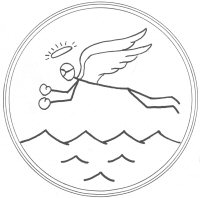
|
11/05/43 - VC-27 established. 07/06/44 - VC-27 reports to U.S.S. Savo Island. 08/05/44 - U.S.S. Savo Island reports to the 3rd Fleet at Pearl Harbor for duty. 09/11/44 - U.S.S. Savo Island supports landing at Peleliu Island. 09/15/44 - Invasion of Peleliu Island begins. 10/03/44 - U.S.S. Savo Island reports to 7th Fleet at Manus. 10/12/44 - U.S.S. Savo Island joins Leyte invasion task force. 10/20/44 - Invasion of Leyte Island begins. 10/25/44 - U.S.S. Savo Island participates in Battle off Samar. 12/10/44 - U.S.S. Savo Island supports landing at Mindoro Island. 12/15/44 - Invasion of Mindoro Island begins. 01/01/45 - U.S.S. Savo Island supports landing at Lingayen Gulf. 01/09/45 - Invasion of Lingayan Gulf begins. 01/30/45 - VC 27 leaves the U.S.S. Savo Island. |
|---|

|
03/__/45 - VC 27 reformed under command of Lt Ralph Elliott. 09/11/45 - VC 27 II disestablished. |
|---|
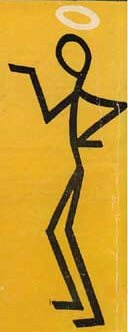
|
Many WWII squadrons had insignia designed by Disney. The VC-27 insignia had a unique history. Simon Templar (aka "The Saint") was the main character in several popular novels and movies by Leslie Charteris. In the stories, the stick figure shown to the left mysteriously appeared in various places to indicate that Simon Templar had been there (similar to the way that drawings of Kilroy appeared in various unexpected places during the War.) The Saint was a roguish character with a mysterious past who set things to right, while taking a share of the spoils. |
|---|
|
According to Ensign Samuel H. Blackwell, a torpedo bomber pilot - now of Tucker, Georgia, "The Saint" appeared in more than 50 of Charteris' novels plus 8 movies. Charteris was asked for permission to use his trademarked character name and insignia for the squadron, and he replied 20 July 1944 with enthusiastic approval: "It is a great privilege to have received this request, and I hope the Saint will bring you all good luck and good hunting." Jackson filed the official documents with the Chief of Naval Operations saying in part: "The significance of the 'Saints' as the Squadron Insignia for VC-27 originated through our desire to choose an emblem that would be simple as well as express our desires toward the enemy. It is well known that the Japanese glory in dying for their emperor. Throughout our training it was our aim to help the Nipponese in realizing their desired goal as 'Saints.' On the other hand the 'Saints' when referring to members of the Squadron's attitudes and actions is a direct satire". |
|---|
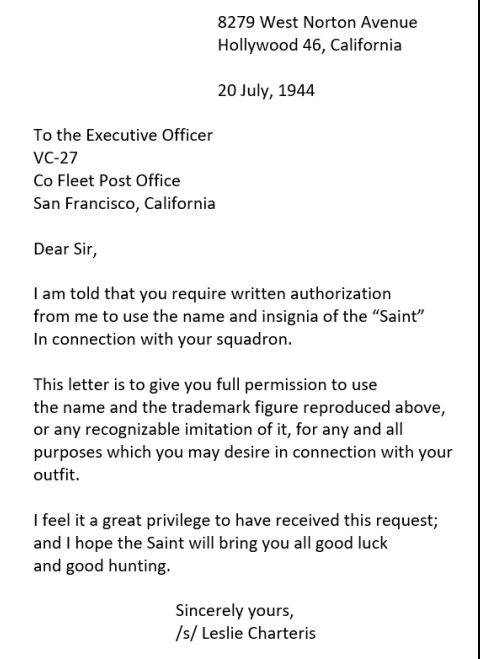
|
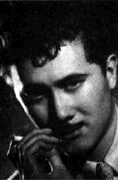
Leslie Charteris at age 36, about the time he wrote the letter to VC-27.
Leslie Charteris (1907-1985) was a famous writer of mystery novels. His most famous character was Simon Templar (aka "The Saint") whose calling card was a stick figure drawing of "The Saint". "The Saint" appeared in a series of books (1928-63), in a television series (1962-69) starring Roger Moore and in several movies (1938-97). |
|---|
|
The Navy has always had unique traditions and terminology. Many naval terms were used to describe aircraft. Naval aviators also invented a few terms of their own. Here are a few:
|
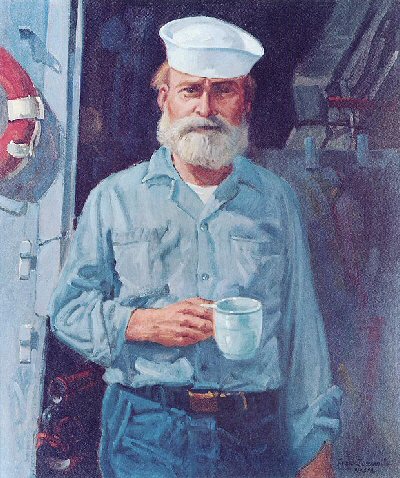
"An Old Salt of the Sixth Fleet"
by Frank E. Zuccarelli, 1972 |
|---|